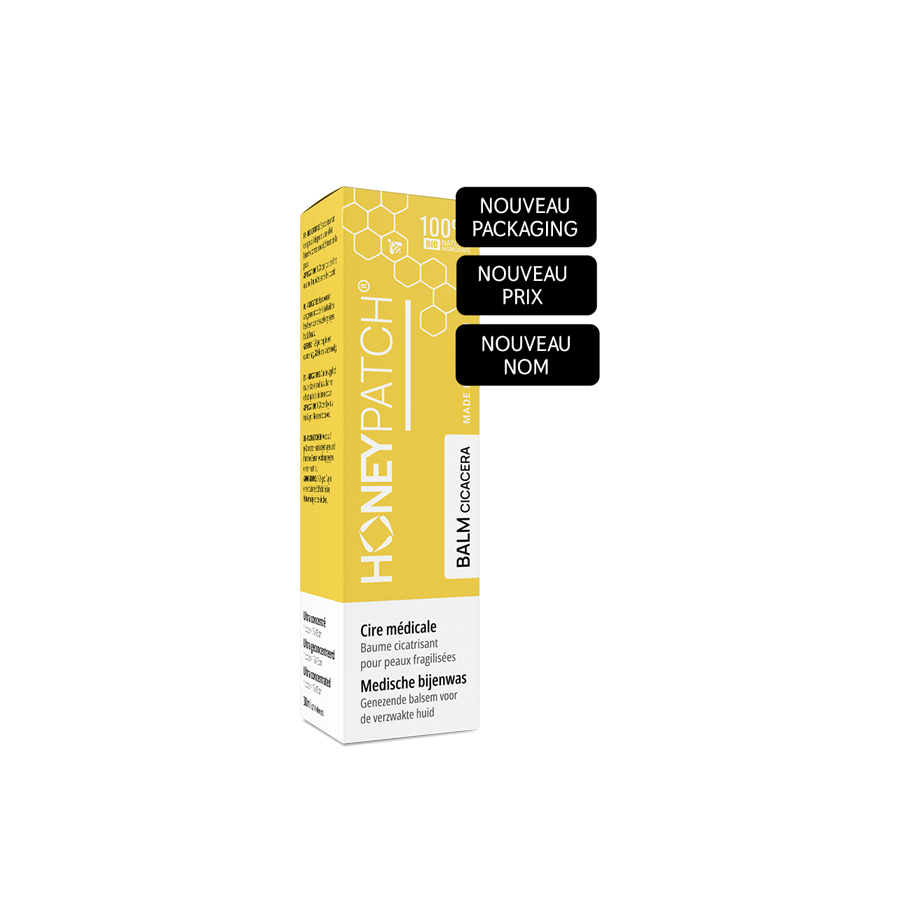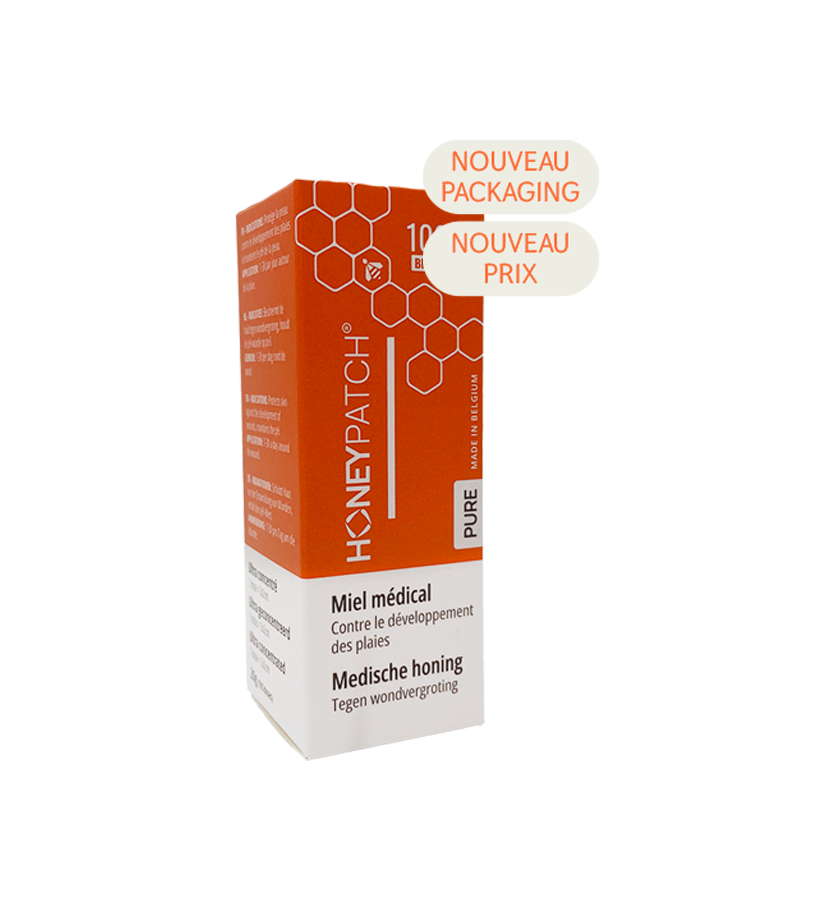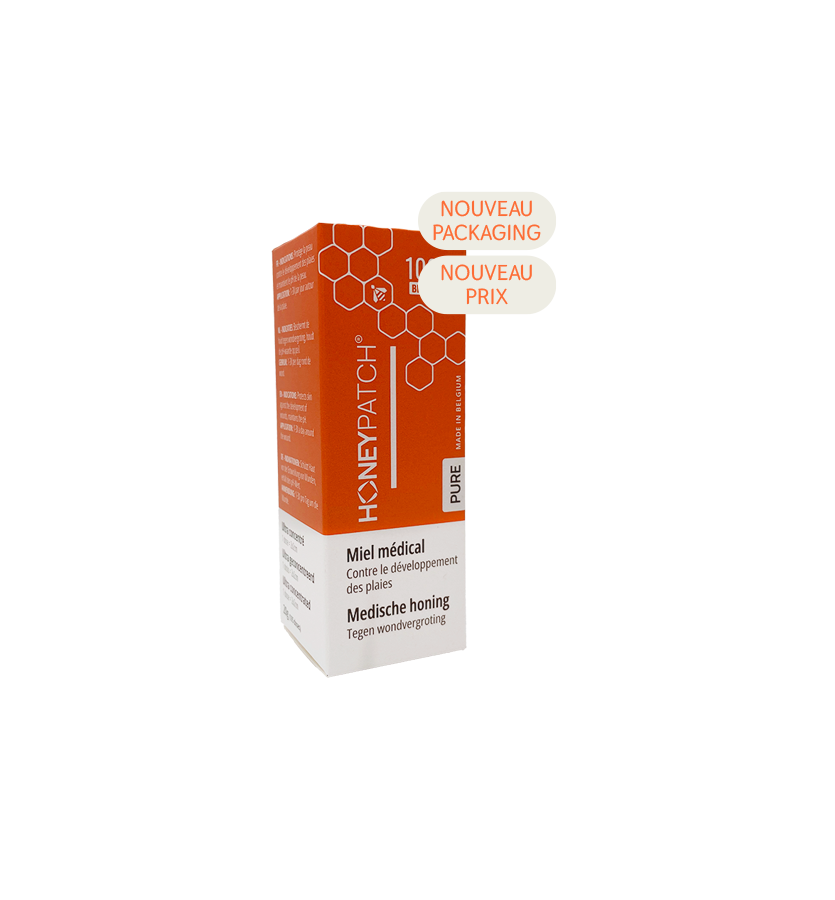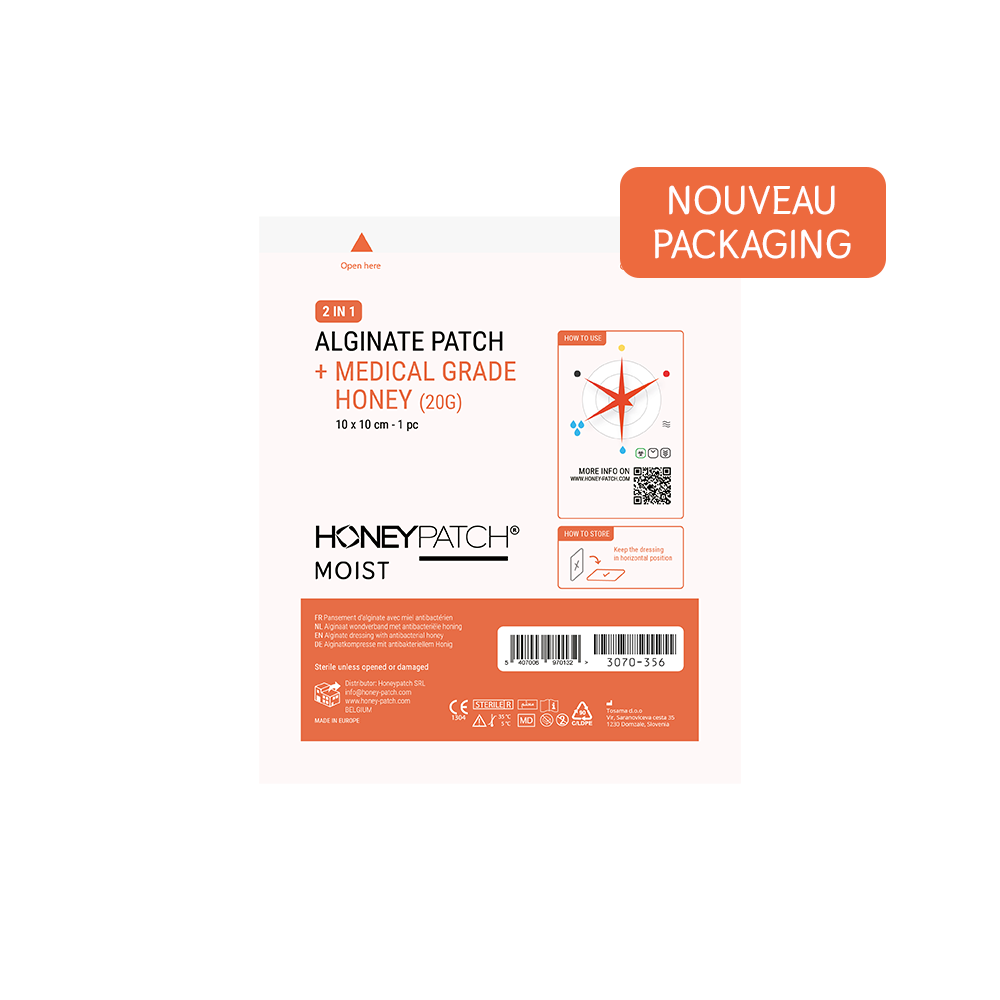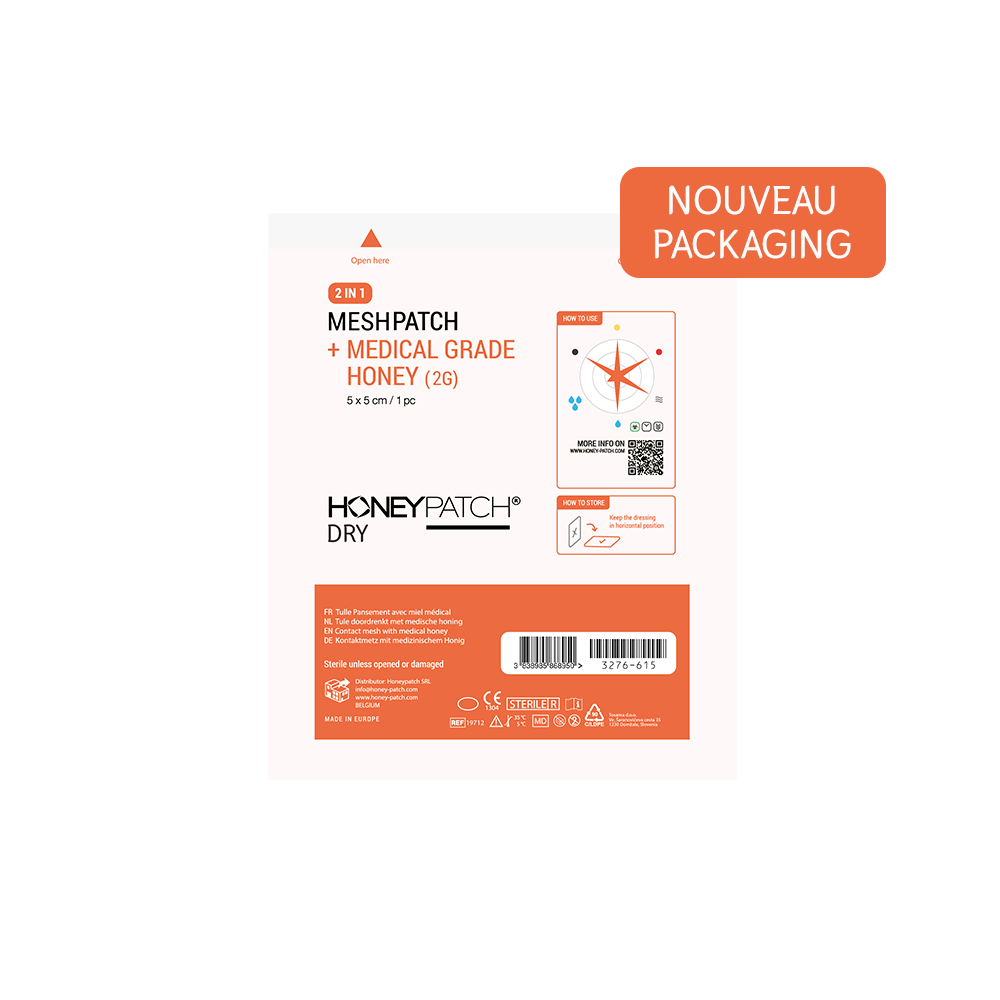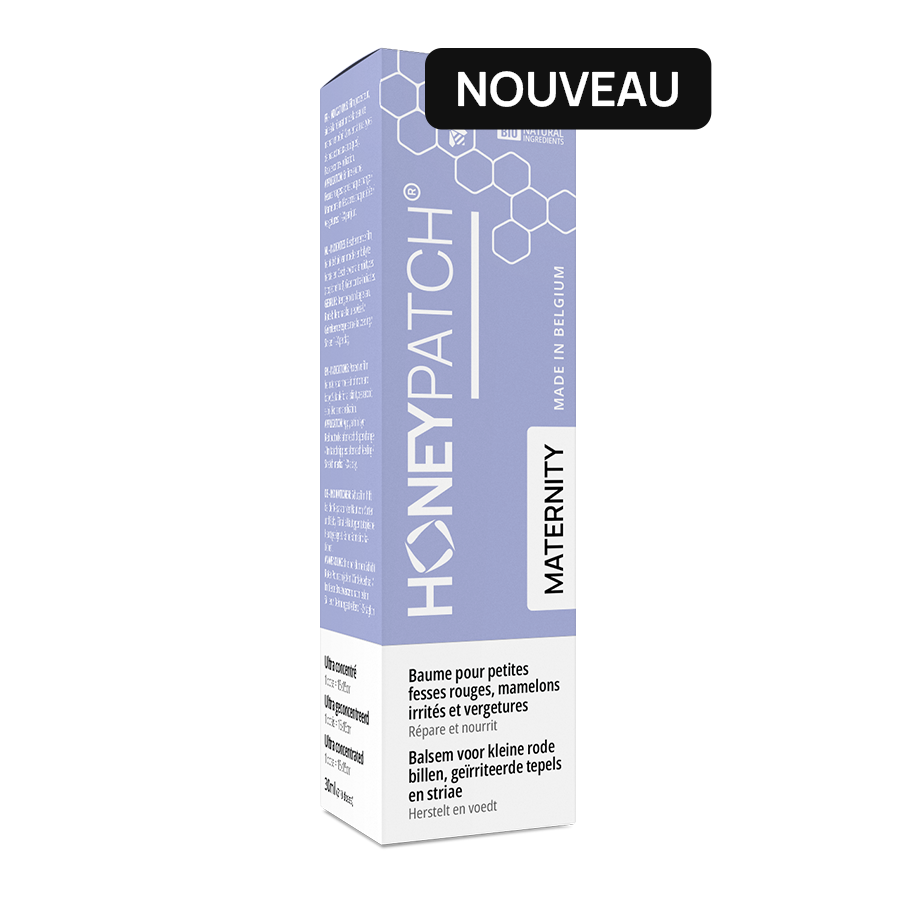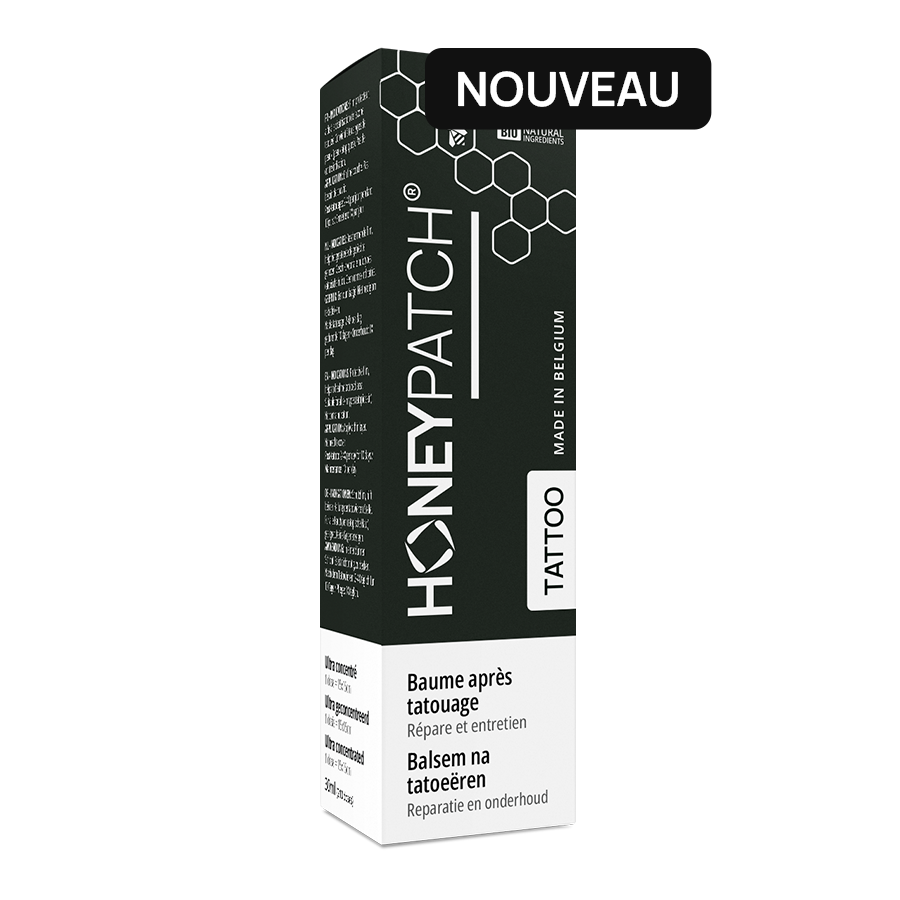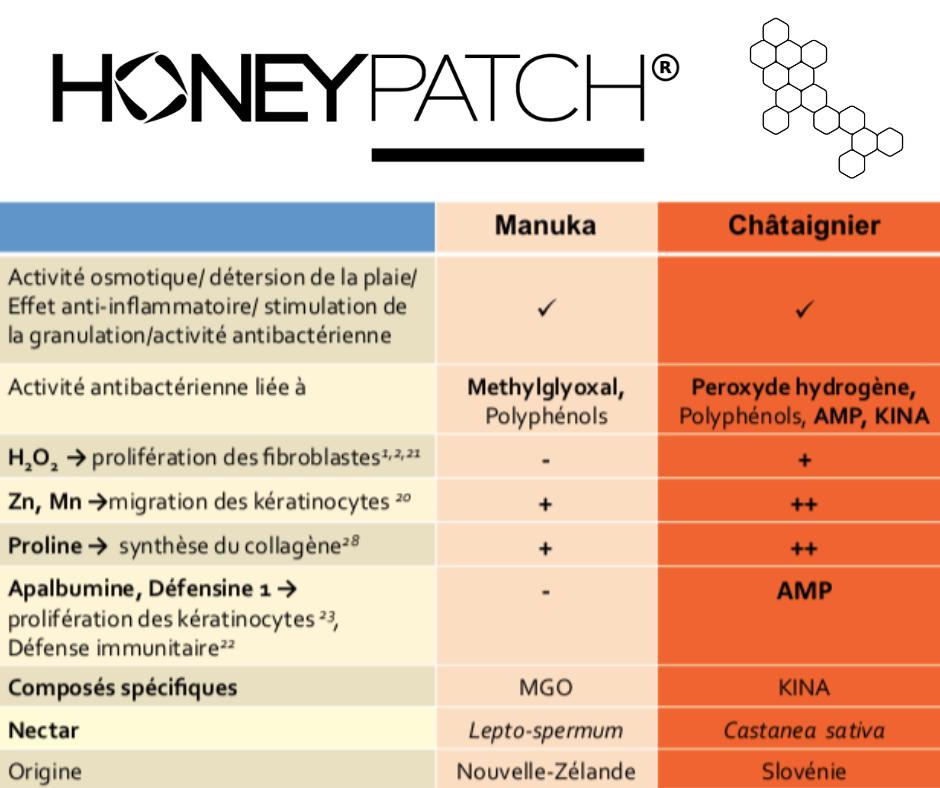Now let's compare the two honeys
Let's focus on the differences between the two honeys. In manuka honey, the antibacterial activity is mainly linked to Methylglyoxal (MGO), which has antibacterial properties. However, MGO deactivates the enzyme glucose oxidase (GOX), which is supposed to create an oxidation reaction to produce hydrogen peroxide (H2O2). Chestnut honey allows this oxidation reaction and therefore the creation of hydrogen peroxide. Thanks to hydrogen peroxide, the wound will be disinfected more quickly. Chestnut honey contains more minerals than manuka honey, it also contains proline, key elements in wound healing. There is also a presence of adenosine monophosphate (AMP) in chestnut honey, which plays a role in cellular metabolism. The KYNA molecule refers to kynurenic acid. This is present in chestnut honey. Kynurenic acid has bactericidal activity. Kynurenic acids are non-competitive NMDA receptor antagonists. They will reduce irritability at pain receptors. They therefore have an antinociceptive (anti-pain) action. In addition, kynurenic acid will interrupt the bacterial quorum and stop the formation of the biofilm by disrupting communication between the bacteria.

